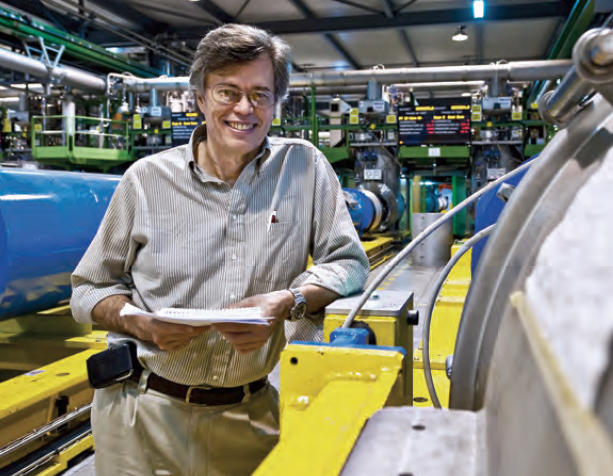Columbia physicists hope to soon observe the one elementary particle yet to be discovered of the 17 predicted by contemporary theory. The particle, which theorists have dubbed the Higgs boson, is crucial to scientists’ understanding of the universe; as hypothesized, the Higgs boson interacts with other elementary particles in a way that slows them down as they move through space. In other words, the Higgs boson explains why matter, even at the scale at which it is composed of single points of energy, has mass.
About 20 Columbia physicists, including professors Gustaaf Brooijmans, Emlyn Hughes, John Parsons, Michael Tuts, and students and postdoctoral researchers, are among thousands of scientists from around the world who are about to begin searching for the Higgs boson at the new Large Hadron Collider (LHC) near Geneva, Switzerland. The LHC, which is the world’s most powerful particle accelerator, lies in a 17-mile-long circular tunnel below the Franco-Swiss border. Built at a cost of roughly $4.5 billion over 13 years, it operated briefly in September 2008 but soon was shut down for repairs before being fired up again this past November. LHC scientists expect that in early 2010 they will begin accelerating beams of protons to near the speed of light and then aiming them at each other, causing the protons to burst into sprays of constituent particles. Radiation detectors will monitor the energy emitted by these particles, many of which will disappear within a fraction of a second.
Mike Tuts manages about 400 physicists from U.S. institutions who are assigned to one of the LHC’s four main research projects, called ATLAS, which stands for A Toroidal LHC Apparatus. The ATLAS team is looking for the elusive Higgs boson as well as other particles whose existence physicists have yet to even hypothesize. The Higgs boson, which is named for Scottish physicist Peter Higgs and is often called God’s particle because of the deep secrets it could reveal, was described by theorists in the 1960s. But it has never been observed because no particle accelerator has produced enough data to verify its existence. The LHC will produce 1 billion proton-on-proton collisions per second. At that rate, physicists expect that a Higgs boson will appear about once every five seconds; within a couple of years, scientists hope to have enough data to identify its properties.
That will be the crowning achievement of the Standard Model of particle physics, a theory that attempts to describe all matter in the universe, according to Tuts. “The only thing more exciting will be to see entirely new discoveries that we can’t even anticipate,” he says. “For instance, we might see something that proves to be the stuff of dark matter, or we might detect a loss of energy in a proton collision, suggesting that a particle has moved into another dimension that we can’t see. Now, that would be truly astonishing.”



